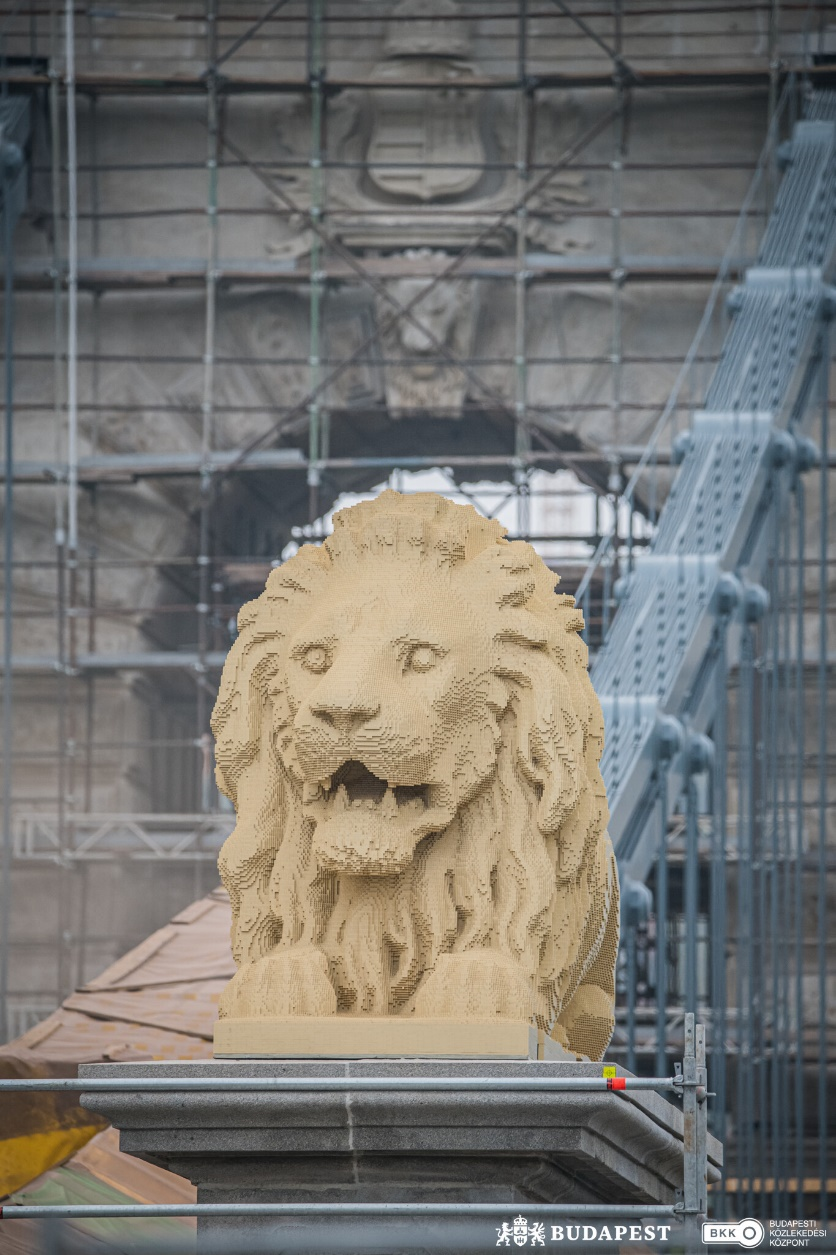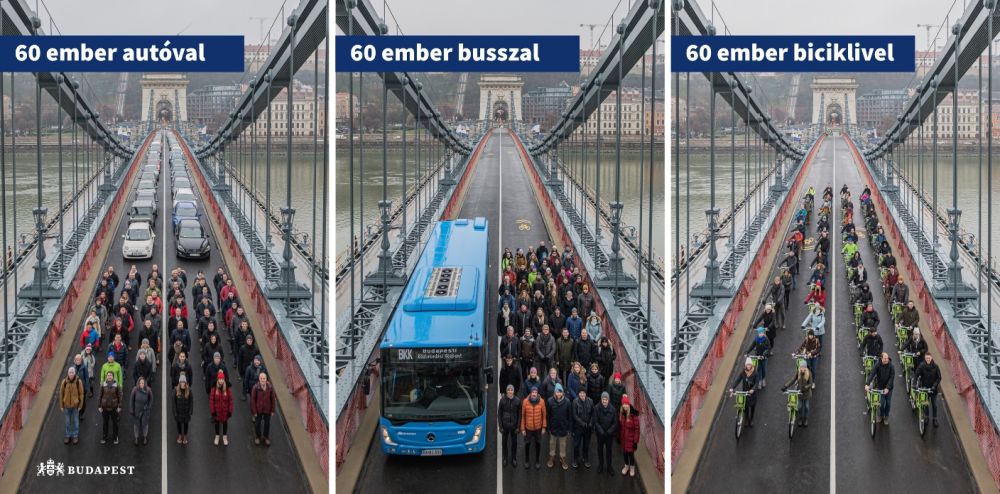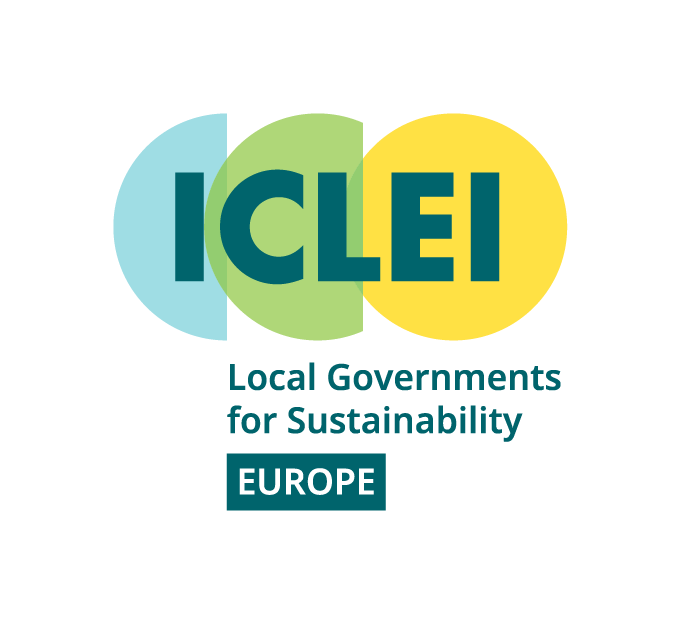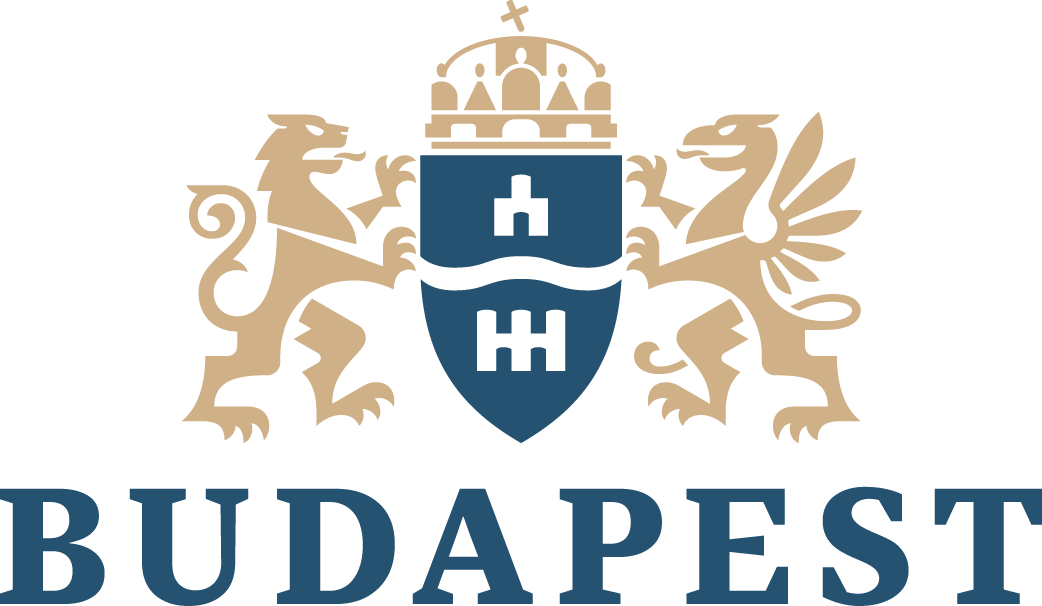
News
Budapest marks two major milestones while restoring the city’s Chain Bridge
6 February 2023
Article by Tamás Kajdon and Máté Sebők, BKK; with editing and contributions by Anna Westervelt, Communications & Member Relations at ICLEI Europe
BKK's enthusiastic colleagues and volunteers have given a symbolic illustration of the space needed to transport 60 people by bus, bicycle or car across the Danube. The most space-saving way to transport this many people is to use a single bus (about 30 square metres when standing in place) or 60 bicycles (about 120 square metres when standing in place). The most space is needed for car transport: 60 people can be transported by 46 cars, if we consider that an average of 1.3 people travel in a car (about 414 square metres when stationary).

A second important milestone during this renovation process was an increase to the family of lion statues that guard the bridge. A full-size replica of one of the lion statues made of 850,000 plastic LEGO bricks and weighing 2.8 tonnes was temporarily placed to guard the entrance of the bridge while the original underwent restoration.It spent a couple of hours on the plinth of the original lion statue until taking its final place in front of Budapest City Hall, at Városháza Park in the city centre.
The flash mob took place at the first major milestone of the renovation of the Chain Bridge on 17 December 2022. The renovation of one of Hungary’s most important historical symbols was long overdue. The construction began 1.5 years ago, and it soon will be completely finished, making it a worthy present for the city’s 150th birthday celebration in 2023.
In the past, traffic jams on the bridge were a regular occurrence, with an average of 27,000 vehicles crossing the Chain Bridge daily (including cars, buses, taxis, etc.). This figure is not even high when compared to other bridges in the city. A survey in autumn 2019 showed that only 4% of the traffic crossed the landmark bridge from among all bridges that span the Danube in the city.
The current experimental prioritisation of public transport, taxis, active and micromobility is expected to
- make public transport services running across the bridge faster, more predictable and therefore more attractive by reducing congestion;
- increase the safety and attractiveness of cycling;
- cause no increase in vehicle traffic compared to the period during the renovation
Over the last 18 months, drivers have found alternative routes and as public transport is prioritised and as active and micromobility modes become faster, more reliable and more attractive, some individuals that still drive in the inner-city might switch to more sustainable modes of transport, which will further reduce car traffic. Nonetheless, it is advisable to plan a trip using the BudapestGo app.
Image (BKK) by "Simon Nyirő"
All news
Partners

This website is produced as part of the CIVITAS FastTrack Coordination and Support Action funded by the European Union Horizon 2020 research and innovation programme under grant agreement No 101006853. The sole responsibility for the content of this website lies with the FastTrack project and in no way reflects the views of the European Union.










